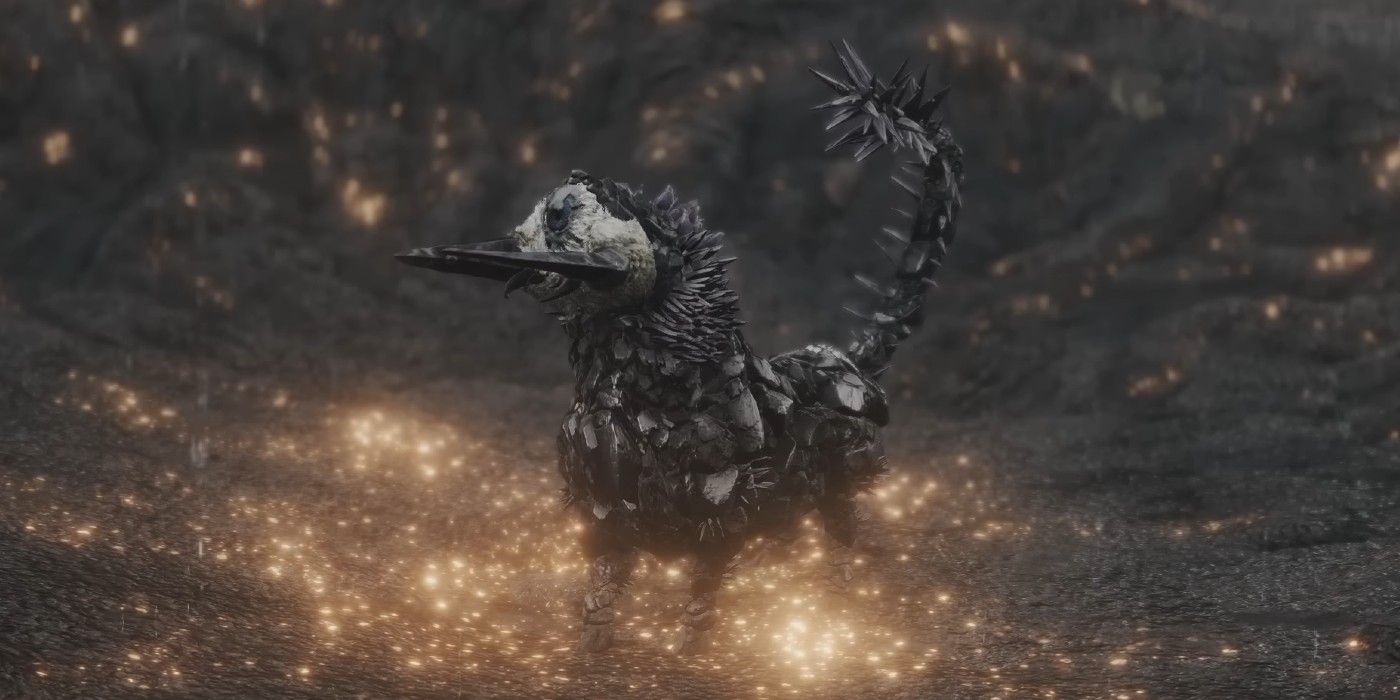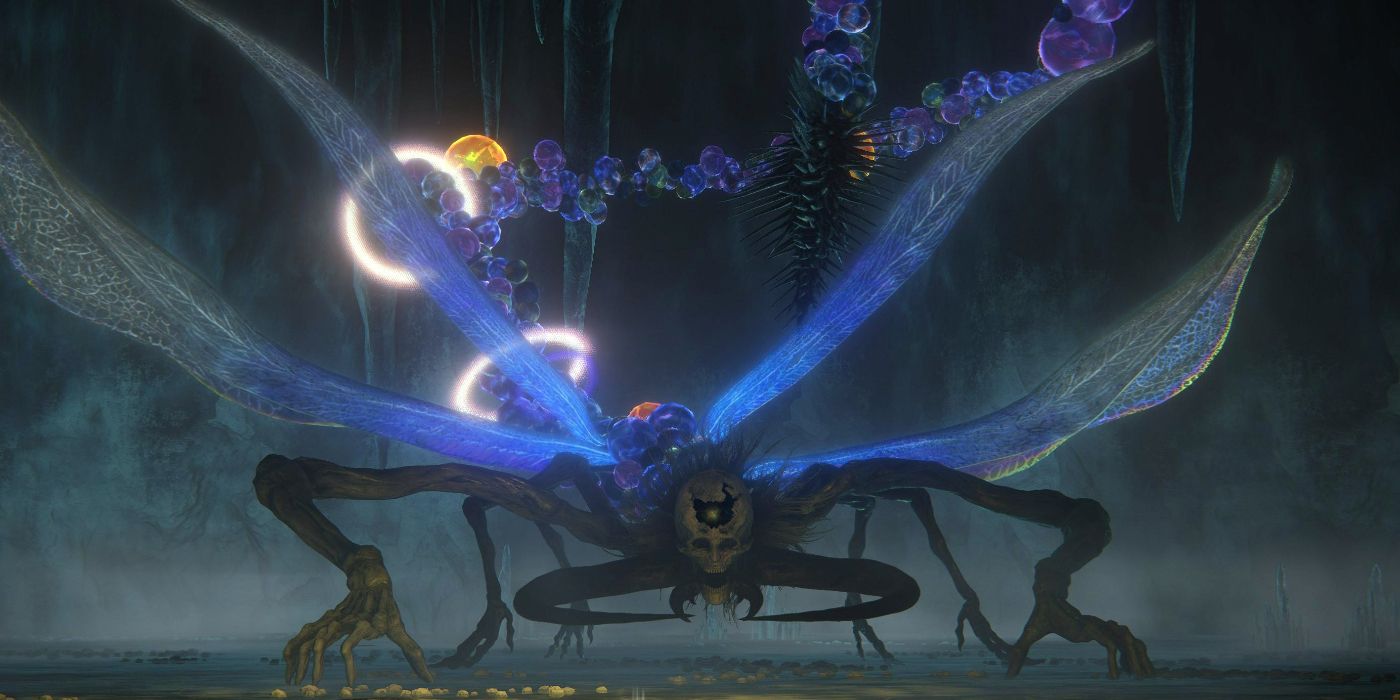Elden Ring, the newest entry in FromSoftware’s Soulsborne series, tells most of its story through environmental means; a perfect example is the relationship between the Fallingstar Beast and Astel, Naturalborn of the Void, one of Elden Ring's scariest enemies. Very little is told to the player about the Fallingstar Beast, with only three of the enemies in the entire game, including one specifically designated as "Full-Grown". This prompted players to dig deep in and around the game to determine what they could about these rare and fascinating enemies.
Elden Ring's Fallingstar Beasts are so named because their origins seem to be from elsewhere. Looking something like celestial antlions, these creatures are covered in or possibly even made of stone, with huge, powerful mandibles and hooves, both of which they employ to great effect in eviscerating unwary players. But there may be more to them than appears on the surface.
BonfireVN on YouTube released a video examining details of the Full-Grown Fallingstar Beast’s model and its connection to Astel. The video shows that the model of the Full-Grown Fallingstar Beast has the same head, under its fur and armor, as does Astel, Naturalborn of the Void. It seems that the Fallingstar Beast is an early stage of a life cycle that includes Astel and possibly the Malformed Star which also has the same head.
The Lifecycle Of Elden Ring's Fallingstar Beast May End With Astel
An interesting comparison can be drawn between the lifecycle of the antlion and the Astel as each start as a relatively small and well-armored creature with prominent mandibles before transforming into winged beasts. Antlion larva spends most of their time still at the bottom of their crater waiting for its prey to stumble in, very similar to how Elden Ring's Fallingstar Beast hunts with its huge jaws. The biggest difference between the two lifecycles, other than the space magic, is that the antlion cocoons itself in a sand and silk mixture. The Fallingstar Beast instead seems to burrow into the ground until reaching a cave, where it hangs from the ceiling by its tail and transforms into a Malformed Star, a mid-point between a Full-Grown Fallingstar Beast and an Astel.
Of the two Malformed Stars in Elden Ring, the most prominent one would be the rock-thrower hanging from the ceiling in Ansel River. Found on top of the ruins next to this beast is the location of Elden Ring's Wing of Astel described as a “Sword fashioned from a delicate wing” and is “suffused with the magic of the stars.” The two Astel that are encountered in-game appear to have all their wings, so possibly the wing comes from the monster it is found next to.
Obviously, this is no more than a theory; reusing models, which is common in game development, and loose similarities to an insect do not mean FromSoft intended all of these creatures to be different stages of the same lifecycle. But given the nature of Elden Ring's spartan storytelling, such possibilities are often left unstated, but it's that kind of ambiguity many fans love about the series, and giving ample room for such speculation is at this point a FromSoftware staple.
Source: BonefireVN/YouTube


